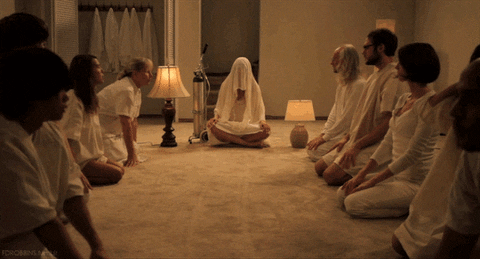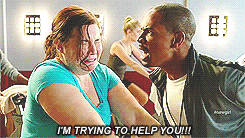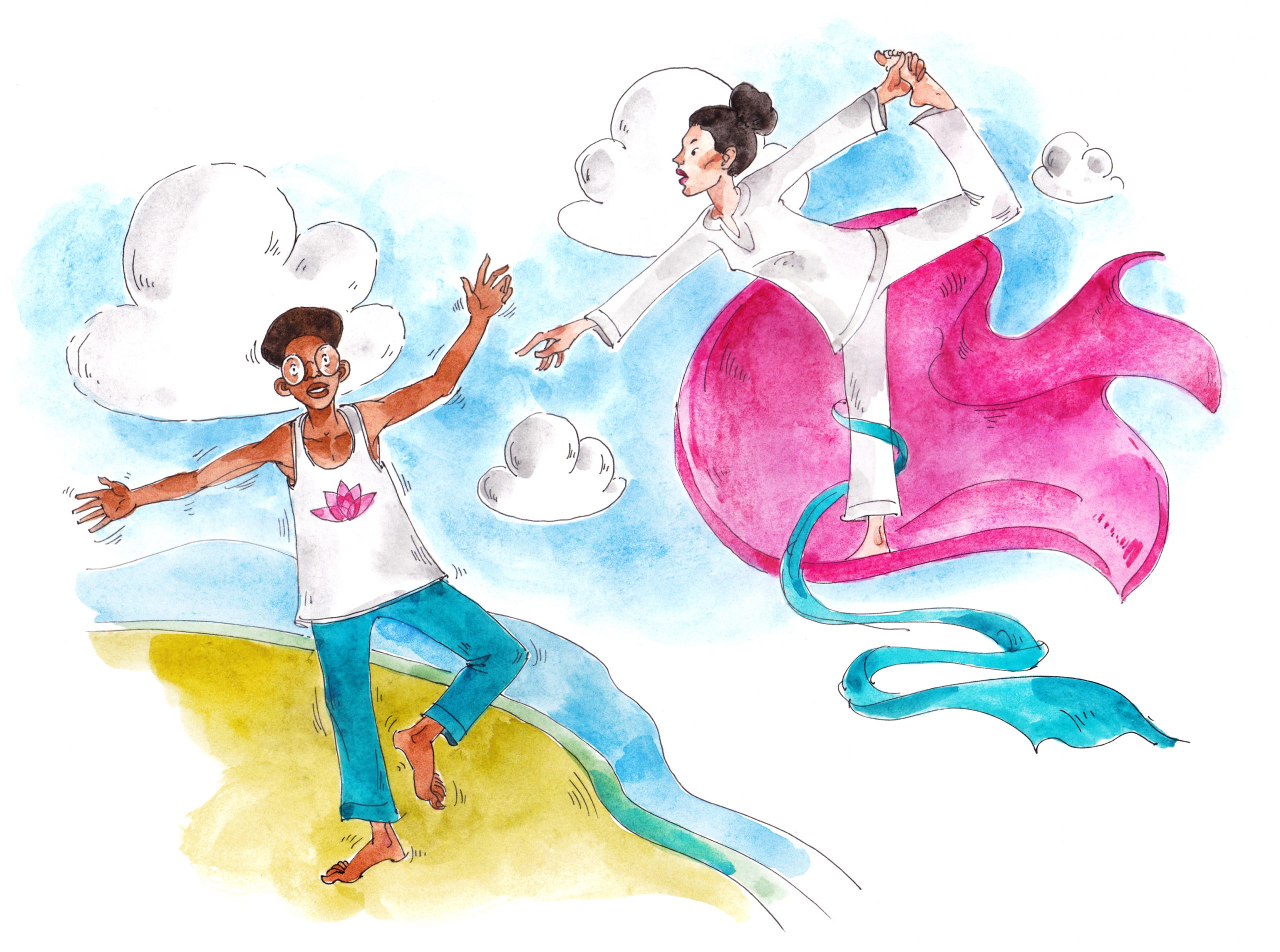Trigger warning: this article discusses the nature of various types of cult-like communities and may be triggering to anyone who has been victimized by these types of groups/individuals or anyone who has survived physical, emotional, mental, financial, or spiritual abuse.
When I discovered yoga, I felt like I’d found a new home. A place where I could explore all my questions about spirituality and reality, heal the self-diagnosed problematic aspects of my personality, and connect to a purpose greater than my individual existence. It was an answer to my never-ending questions and a family with which to explore it all.
At least, that’s what I thought. I soon became discouraged as I met zealous teachers promoting their techniques as cure-all solutions and found communities of yogis blindly following one set of teachings or beliefs.
The more I integrated myself in the yoga community, the more it felt like a slow indoctrination into a cult. As someone who has always had a propensity for asking questions, I became curious as to why a lot of yoga and spiritual communities I sampled felt so akin to a cult. What I came to find was that I wasn’t the only person experiencing the toxic and dangerous side of the seemingly “good-vibes-only” culture of yoga.

What is “yoga cult culture”?
The yoga community is obsessed with the concept of followers. For a teacher to be truly successful in the eyes of the yoga industry, they need to reach a certain threshold of followers; ideally including both social media accounts and real flesh-and-blood students. In both yoga and spirituality communities, the very measure of a teacher’s wisdom or enlightenment is often the number of people who listen to and watch them. When it comes to evaluating success, quantity trumps quality.
This paves the road to unhealthy and manipulative relationships between yoga teachers/spiritual leaders and those who turn to them for guidance. When a teacher is focused on how many people attend their retreats, selling out classes, and building their audience, it draws their attention away from individual and meaningful relationships with their students.

In most yoga and spiritual communities, a hierarchy has formed where the teacher is above the students. This teacher is seen as the individual (or group of individuals) possessing a unique truth that is sacred and infallible. This truth, be it the power of pranayama or the mystic pillars of Christian Science, is treated as the answer and students are led to believe that by following their leader unquestioningly, they will have access to this answer. They are encouraged to think that this single answer will provide them with the meaning and a sense of purpose that their life is missing.
This is how cults work. And by promoting this hierarchy in the world of yoga and spirituality, we are facilitating the formation of what I have deemed “toxic ‘self-help’ communities.” These are large-group awareness trainings, personal growth seminars, guru-led yoga communities, and the like that mimic the behavior cults much more closely than most of us would care to admit.
What does a spiritual or yoga cult look like?
Rarely does a cult look like a bunch of people in white robes drinking Kool-Aid with the goal of ascending to another plane. Rarely does it look like a commune where all the women serve one predatory man. Rarely does it look like the cults depicted in Jamestown, The Ashram, or Rosemary’s Baby. Cults are much more common, and much less satanic, than most of us would assume. Through my interviews and alongside my research, I’ve come up with a few categories for how these cults might appear in the world of spirituality. This list is by no means an official categorization, nor is it an exhaustive representation of every type of cult-like community. It is, however, a helpful way to look at and understand what the toxic “self-help” communities look like and how common they truly are.
Note: Throughout this article, I’ll be sharing a few quotes from Don Durrance, Yossef Sagi, and Lauren Brown. These are all individuals who agreed to share their own experiences with cult-like organizations and toxic “self-help” communities.
The Deified Teacher
This is a yoga teacher or spiritual leader that has achieved god-like status. Their classes, retreats, workshops, and other offerings. are always sold out, and everything they say is treated like divine wisdom straight from the Spirit’s mouth. They probably wrote a book or are working on a book based solely on their own spiritual practices. It’s what organized religions have done to their prophets, and it’s what a lot of us do to our instructors. Often, the teacher is a truly wise and thoughtful person who has some wonderful ideas and is excited to share these with their community. The problem arises when this person’s followers become dependent on them for spiritual guidance and refuse to question their claims.
So how does an average teacher reach this divine status? “It’s just because power is available there,” Don explains. “It’s a natural culture that’s arisen… if you don’t understand how mechanisms [of power] work, it’s a really common pitfall you’re falling into. It feeds our tendencies as human beings.” I spoke to Aisha Shabaaz, a clinical psychologist who focuses on manipulative relationships, who explained how these teachers and gurus may often have good intentions, but their own need for validation, approval, and love (all common human desires) can cause them to depend on the devotion of their students. Simultaneously, students share a similar need to feel accepted and may unconsciously start doing whatever they think will get their teacher and fellow yogis’ approval.
Soon, the teacher is unconsciously encouraging their own deification, and the students are unconsciously falling into the role of worshipers. This confirmation bias repeats over and over until the relationship between the teacher and their students is firmly grounded in a hierarchy of god-like teacher on top and pious practitioner on the bottom.
A guru can be a great guide on the path of personal development, but if we start relying on them to facilitate our evolution, and assume everything they say is capital-t-Truth, then we lose our own autonomy and sever our connection with our own inner knowing. They preach about helping you come into your higher self, but their teachings have nothing to do with you; they center on their personal path to enlightenment, which they then try to apply to each and every student who follows them.
“The problem is,” Yossef explains, “it’s easier to follow, and we want someone to tell us what to do. The harder work is to check in with yourself, and to constantly see what’s right for you and to carve your own path. It’s a scary way to live, but I think it’s also the most liberating way to live. Everywhere else, you’re trapping yourself.”
Find teachers that encourage you to carve your own path. Ones that support discussion, questioning, and exploration. Most of all, look for teachers that are as interested in learning about your experience as they are about sharing their own and who truly see you as an equal. Because let’s face it, the Defied Teacher is not so different from the cult leader.
The Enlightened Life Coach

This is the person who knows all of the answers to every question you could possibly ask. They are a life coach after all; so, surely, they should be able to fix your entire life, right?
My sister worked with a personal trainer, and it was a really empowering and growing experience. I have a client who is a life coach and believe she is doing wonderful and meaningful work. My own therapist helped me transform my life. There is nothing wrong with life coaches as a whole, but those who claim to have it all figured out are questionable.
The Enlightened Life Coach ticks a lot of the same boxes as the Deified Teacher. They probably started with good intentions, believe whole-heartedly in what they teach, and build a career by building a following. However, the power hierarchy that occurs with a life coach comes about in a different manner than that of the Defied Teacher. Life coaches generally work one-on-one. They build a relationship with you, express deep interest in your concerns, and offer tailored solutions to all of your problems.
The trap that happens with the Enlightened Life Coach is two-fold; first, they make you feel a sense of lack. Second, they make you believe they are the only one who can solve that lack. “That’s how they do it,” Don said, reflecting on his experience, “they start to tell you ways in which you’re wrong or ways in which you’re lacking or pointing out your flaws… It’s hard to get out of that mentality that I’m not good enough.” Once the Enlightened Life Coach leads you to focus on your lack, they can offer themselves as the guide to help you remove all that makes you “not good enough.”
They create this sense of trust by demonstrating their own flawless life. By appearing to lack nothing, we begin to trust that they must know some secret.
As Lauren explained of her experience, “There was a part of me that really wanted something, and they were clearly in a position of confidence and of having that something that I wanted.” It’s easy to trust someone who claims to have found the solution to all your woes.
But you will never hear an Enlightened Life Coach ask if a practice resonates with you. They will never answer one of your questions with “I don’t know.” They have built their brand on the facade of having all the answers and rely on their clients’ unquestioning obedience to survive. They insist that if you do exactly as they say, your life will be everything you’ve ever dreamed it to be. But the reality is, very few people are actually enlightened. A tiny, tiny minority have all of life’s problems sorted out. And that person is almost definitely not your life coach.
The Heal-All Organization

Every single person is different. We have different bodies, different ways of thinking, different emotional responses, different energetic bodies… the list goes on. To expect any practice or technique to work for everyone is just plain ridiculous. And yet, it’s what the self-help industry is built upon.
Countless organizations make their living by offering a set of guidelines to living that they claim will fix your life, regardless of what issues you are dealing with. This is how Heal-All Organizations work. These are groups, communities, non-profits, and companies that are formed with the goal of healing the world. A lofty, lovely goal, but an incredibly unrealistic one.
First of all, we cannot assume that one set of practices is going to heal the world. As Lauren rightly explains, “The message that there’s one thing that works for everybody is not accurate. Even in a benevolent way.” While the practices these organizations are offering may be truly powerful and transformative techniques, to assume they work for everyone and everything is to strip individuals of their autonomy. This is the foundation of cult-culture; to remove autonomy.
These heal-all practices are the epitome of prioritizing the idea over the individual. And how can you trust that the people preaching these techniques are concerned about your individual growth and development if they don’t adjust the offerings to fit your unique circumstances?
These organizations start as a group attempting to help save the world. Perhaps it’s Landmark; perhaps it’s your local healing circle. Over time, the organization starts to grow, and in order to keep the doors open, more energy goes into getting more followers and making more money. Soon, the community grows large enough that it is impossible to address the needs of each and every member, so the aforementioned practices become a dogmatic structure every student must follow in order to grow. And if this dogma doesn’t work for you, that’s because you aren’t committed enough—obviously, the practices themselves are infallible.
Yossef perfectly illustrates what happens when these systemic practices take over, “They create systems. And these systems are important because they give us structure. However, eventually, those systems serve the system more than the people. They are created to serve the people, but in the end, the people serve the systems. It all switches from ‘how can we change people’s lives’ to ‘we want to reach more people, so we have to get it out there,’ to ‘we need more money to reach more people,’ and then we forget about the original mission.”
This is the structure of most famous cults out there, as well as the unknown ones that haunt our yoga and spiritual communities. They pull people in with the promise to change lives, but after a short spurt of growth that comes when any seeker discovers a new practice, students reach a plateau. Because the organization is not built to provide changing advice and techniques to help you on your journey to Self; they are built to spread their principles to as many people as will listen to (and pay) them as possible.

Sounds familiar?
Countless organizations, spiritual leaders, communities, teachers, and groups have fallen into this trap. Some on a larger scale and more infamously, such as NXIVM and Scientology. Others on a much smaller scale, like the yoga teacher who told me my hesitance toward Bikram’s dangerous physical practices was a sign that I was too afraid to open my soul to the reality of the Divine.
It is surprisingly easy for a good idea to become a dangerous dogma. But how come so many individuals fall into the traps these toxic self-help communities create? Why don’t we stop these people in their tracks and reroute them to the pure intentions they began with? Or just walk away when we realize the poisonous nature of what they preach? How does someone get sucked into a community like this? And if you do, how do you identify the problem and climb back out?
For that, you’ll have to wait for part two…
Discover the real-world effects of toxic communities on The Beginner’s Mind podcast!
This series is co-produced with The Beginner’s Mind Podcast. Every other week, I post an article here on Shut Up & Yoga. The week after each article is posted, I air an interview with an expert in the field on my podcast, The Beginner’s Mind.
For this topic, I interviewed a whole cast of characters who have hands-on experience with cult-like organizations and manipulative teachers. We explore how these organizations pulled them in, their experiences with these groups, and their process of leaving these toxic communities.

Illustration by Katya Uspenskaya
Edited by Ely Bakouche
Enjoyed reading this article? Consider supporting us on Patreon or making a one-time donation. As little as $2 will allow us to publish many more amazing articles about yoga and mindfulness.





